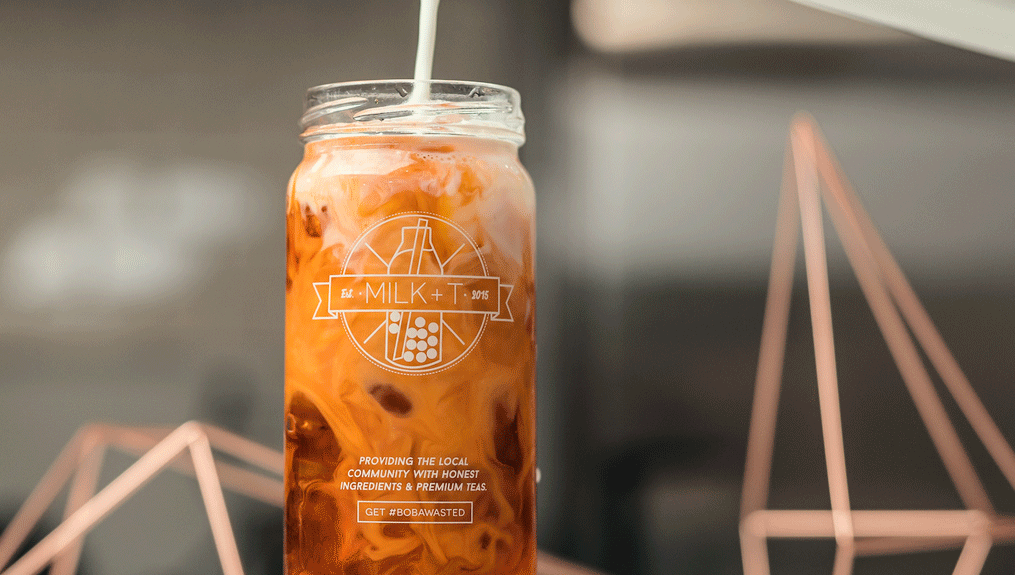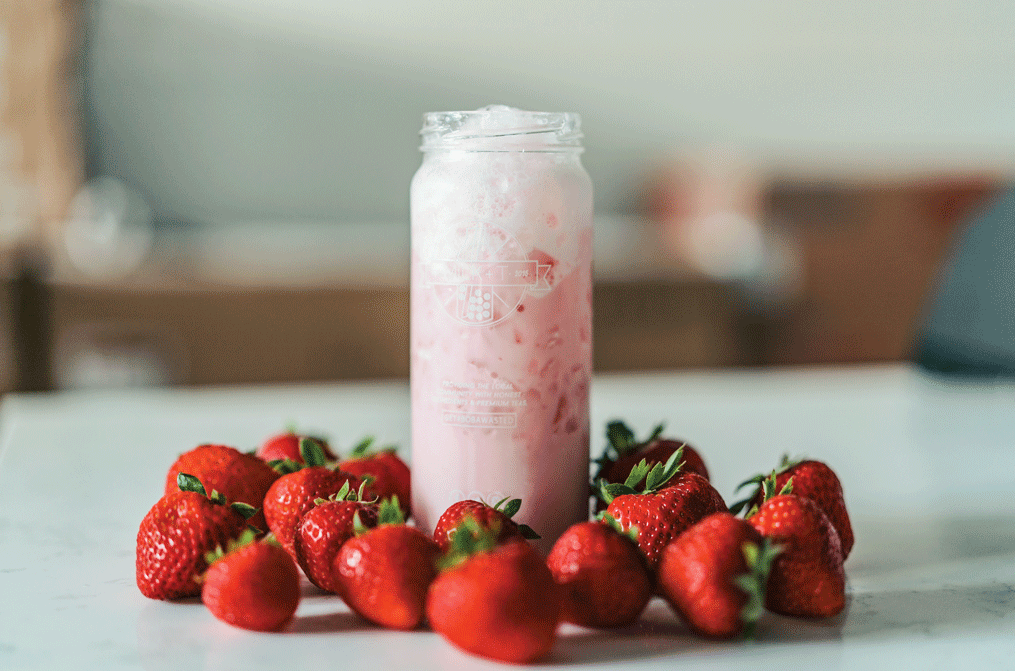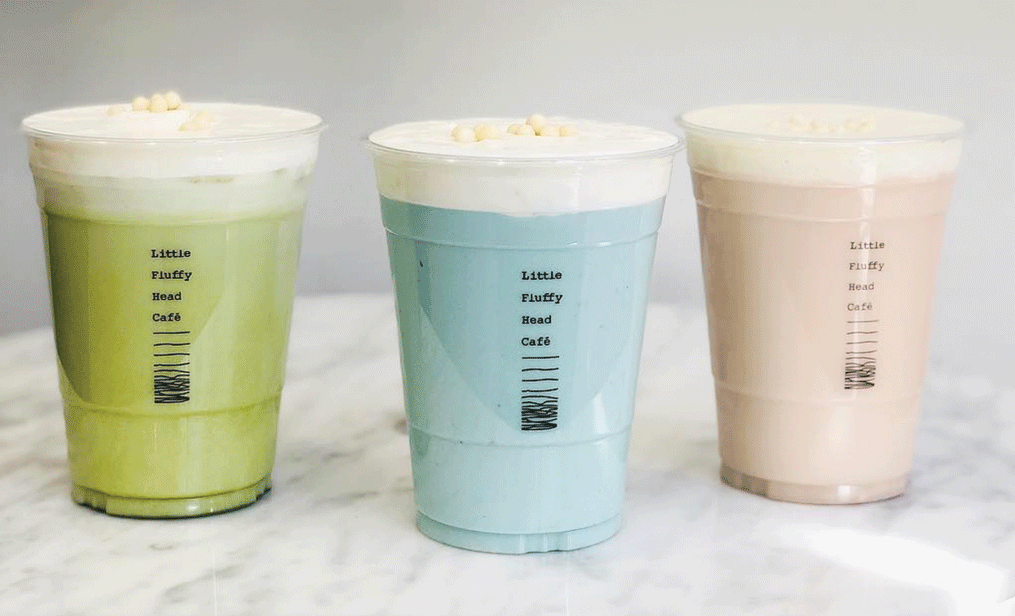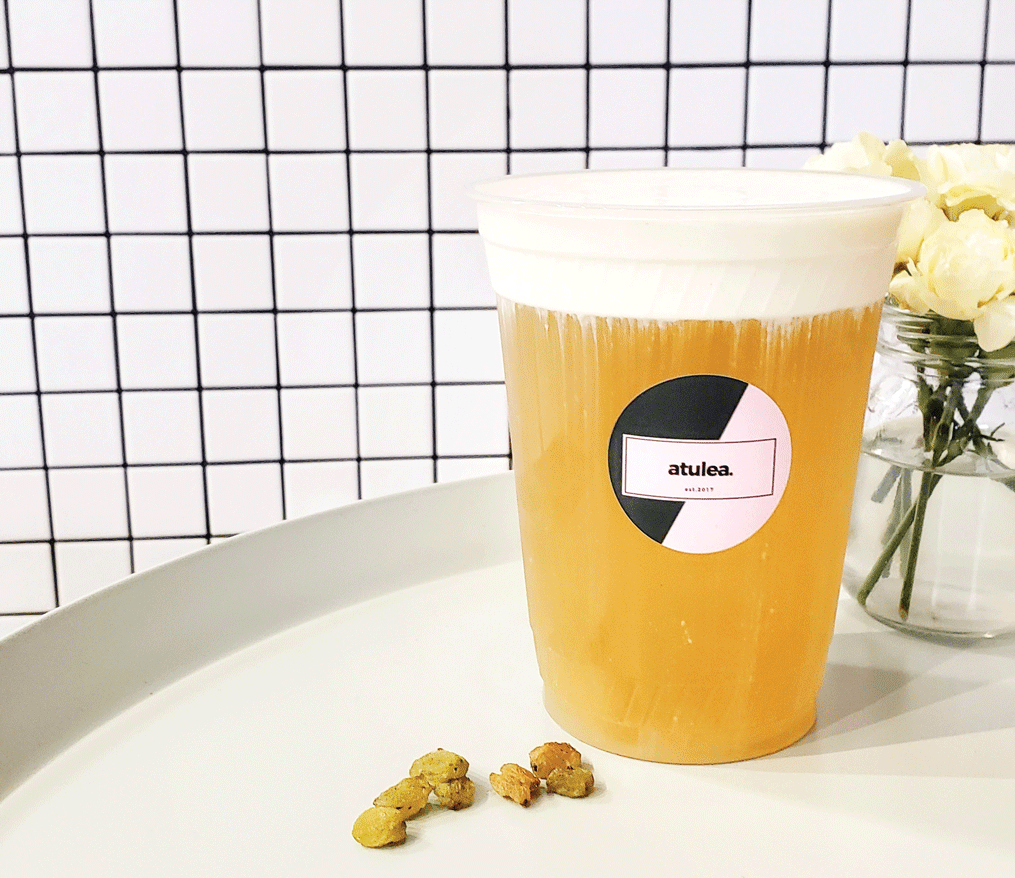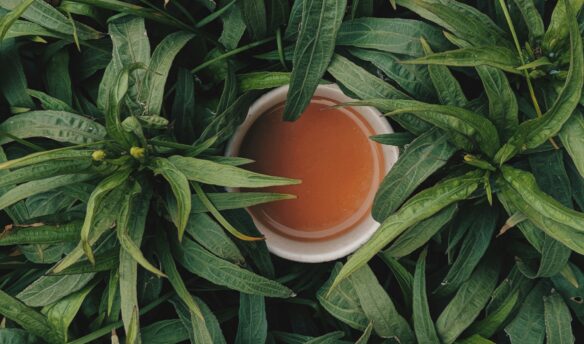Similar to Australia’s influence on specialty coffee trends, Taiwan has pioneered several specialty tea trends now widespread across the globe. But why does Taiwan have such an influence on tea trends? And what’s the next big one?
We talked to several tea shop operators to find out.
Terry Hung
Co-owner, Tapio
Charleston, South Carolina
A child of Taiwanese immigrants, Hung used to visit Taiwan each year and first tried boba at age 12 at his aunt’s boba tea stand. When he moved from New Jersey to South Carolina, he noticed that while boba tea was popular in larger cities, Charleston didn’t have a boba shop.
Hung and his wife decided to open Tapio in 2014, but at the time, they struggled to find a landlord who understood the boba tea concept. The couple eventually subleased a 400-square-foot space.
“We used to sell about $50 in a whole day, but now we’re not doing too badly,” says Hung. Their business has grown as the concept has taken off, and several other boba shops have opened in the area.
“Every month, we try to come up with new flavors based on my wife’s recipes,” says Hung. These have included butterbeer, spicy mango, and lychee rose milkshake.

They’ve also added cheese tea and Thai and Taiwanese street food such as popcorn chicken and Thai dumplings, the latter of which is available on weekends. Earlier this year, they introduced two new cheese tea drinks: boba brûlée, which uses a torch to crystalize the sugar, and Oreo cheesecake, which tastes like its namesake, according to Hung.
“Once people try [cheese tea], they come back for it, and we’re creating these other unique drinks,” he says. Hung adds that after they try several versions of a new drink concept in Taiwan, they’ll put their own spin on it.
Hung’s prediction for the next tea trend hails not from Taiwan but from Thailand. Galaxy tea uses the flower nam dok anchan (also called clitoria ternatea or butterfly pea) from Thailand to change colors when it reacts with lemonade or lemon juice.
“When you look in a clear bottle, it looks like a kaleidoscope made out of tea,” says Hung. “That’s something we will be doing soon.”
Stacey Kwong
Co-founder, MILK+T
Multiple locations
Kwong grew up in San Gabriel, which she calls the boba capital of California, thanks partly to a large community of Asian Americans.
“There are teahouses on every corner; it’s almost like Starbucks,” she says. “I was always surrounded by that, and I wanted to build my own teahouse someday.”
That day came in 2015 when she opened a self-serve boba truck. Now, MILK+T has brick-and-mortar locations in three states. However, boba tea wasn’t always as trendy as it is now.
“When boba was first introduced to the States in the 1990s, many people thought it was a phase,” says Kwong. “Eventually, it grew past that and became almost like the coffee industry.”
Kwong points out that Asian countries influence not only tea but also desserts. For instance, mochi, Japanese sticky rice cake, and mochi ice cream are now available in many American supermarkets. Social media may have played a role in these trends. “Instagram has a huge impact because people take photos, and word of mouth spreads to everyone they know,” adds Kwong.
Kwong predicts that galaxy tea or soft serve mixed with boba could be the next big thing. “I’ve seen it in Canada, and there are photos of it in Taiwan,” she says. “I think it’s only a matter of time before someone [in the U.S.] gets soft serve and puts boba on it.”
Jenny Zheng
Founder, Little Fluffy Head Café
Los Angeles, California
Zheng, founder of Little Fluffy Head Café, points out that while cheese tea may have originated in Taiwan, it attracted attention after becoming popular in mainland China around 2015. “I think China and Taiwan are influencing each other in a way,” she explains. After trying cheese tea while visiting Shenzhen, China, Zheng became one of the first to open a cheese tea shop in the U.S. in 2017.
Zheng says cheese tea’s novelty and surprise factor has contributed to its popularity.
“It’s not what you think it is,” she says. “It looks like a regular tea latte.” When you drink it, you discover it has a richer, creamier texture than a regular tea latte and a subtle saltiness.”
Immigration has a lot to do with the import of Asian drink trends, according to Zheng. “A huge group of Taiwanese immigrants migrated to the United States, and they brought with them this drinking culture,” she says. “I think that plays a big part in influencing the beverage culture in the United States.”
Her pick for the next beverage trend? Brown sugar iced milk. The Taiwanese drink is popular with the Asian community in San Gabriel Valley, but because it uses whole milk, Zheng admits that the recipe would need to be adapted to appeal to mainstream American consumers.
“The current trend is drinking almond or oat milk, which goes against that trend,” she says.
Vince Shi
Co-owner, Atulea
Seattle
After trying cheese tea in his homeland of China, Shi opened Atulea in Seattle last fall. He says cheese tea’s distinctive texture gives it an appeal similar to boba.
“It’s [a] very complex taste because you have two layers: one tea layer and one cheese layer,” he says. “The cheese melts in your mouth, tastes a little bit sour, a little bit sweet, a little bit salty, which makes a good drink.” Once customers try cheese tea, many return for more. “I have some regulars [who] drink cheese tea every single day,” says Shi.
He sees matcha as the next big beverage trend. Atulea serves dirty matcha with espresso and matcha lattes with ingredients such as pineapple puree, white chocolate, or turmeric.
Cover photo by Tommy Trinh
This article was originally published on June 5, 2019 and has been updated to reflect Fresh Cup’s current editorial standards.



